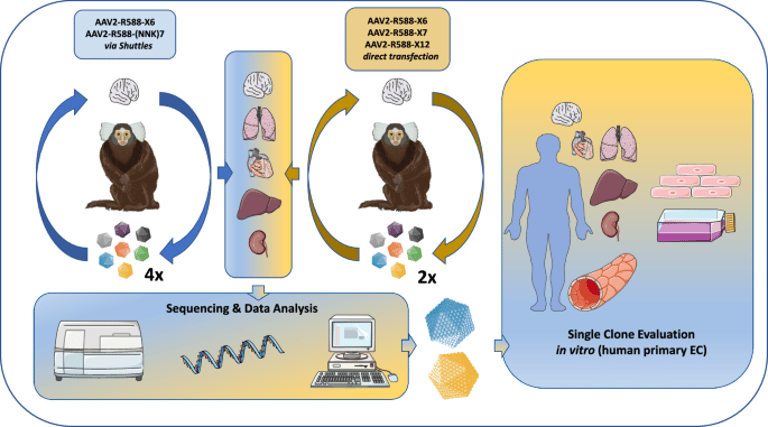Breakthrough AAV Capsid Mutants Enhance Brain Targeting in Primate-Based Gene Therapy Study
August 22, 2025
Recent research has identified specific AAV capsid mutants that show increased homing to the brain and other perfused organs, with some variants demonstrating improved transduction efficiency in primary human microvascular endothelial cells.
Traditional screening of AAV libraries in rodents has limitations because certain variants, such as AAV.PHP.B, exhibit restricted efficacy in primates due to receptor polymorphism differences, highlighting the need for primate-based screening.
The study employed peptide libraries based on AAV2, with modifications at amino acid position R588, creating diverse capsids displaying peptides of varying lengths—6, 7, and 12 amino acids.
In vivo screening was conducted in six adult male marmosets, with each receiving intravenous injections of up to 6×10^12 particles, and tissue samples were collected 44 hours post-injection for analysis.
AAV vectors are popular in gene therapy because of their safety and ability to transduce multiple cell types, but their targeting specificity can be enhanced through capsid modifications.
Tissue samples from the primates underwent amplification and next-generation sequencing of AAV genomes to identify peptides enriched in the brain and other organs, indicating potential targeting capabilities.
The researchers aimed to find AAV variants with improved transduction of human vascular endothelial cells by screening capsid libraries directly in non-human primates, specifically the common marmoset.
Multiple rounds of screening showed a temporary increase in AAV particles in the brain, suggesting successful enrichment of brain-homing variants, although other organs also showed increased particle counts over time.
Summary based on 1 source
